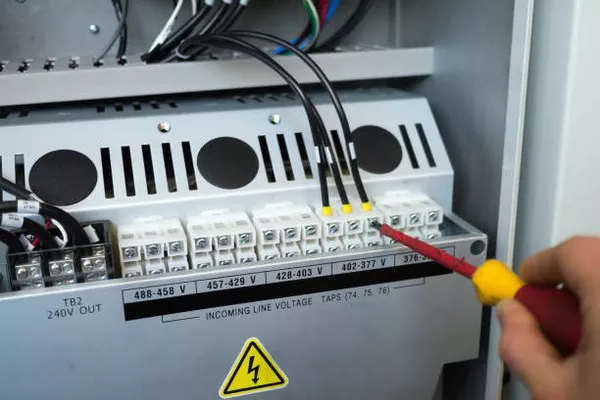As seemingly simple as they may appear, doorbells are composed of several components working in tandem to provide the familiar chime announcing a visitor’s arrival. One of the key components of a doorbell system is the transformer, responsible for converting household voltage to the lower voltage required to power the doorbell. Understanding the location and function of this essential device is crucial for troubleshooting, maintenance, and installation of doorbell systems.
1. The Role of the Transformer
At the heart of any doorbell system lies the transformer. Its primary function is to step down the standard household voltage, typically 120 volts in North America, to a lower voltage suitable for operating the doorbell circuit, usually between 16 to 24 volts. This lower voltage is safer for operating the doorbell components and reduces the risk of electrical shock.
Transformer Specifications
Transformers used in doorbell systems are typically low-voltage transformers, often rated between 16 to 24 volts AC (alternating current). They come in various power ratings, with common options being 10VA or 20VA (volt-amperes). The power rating indicates the maximum load the transformer can handle. When replacing a transformer, it’s crucial to match the voltage and power rating to ensure compatibility with the doorbell system.
2. Locating the Transformer
Finding the transformer in a doorbell system can sometimes be a challenge, as it is often tucked away in an inconspicuous location within the household. Here are some common areas where you might find the transformer:
Near the Electrical Panel
In many homes, the doorbell transformer is installed near the main electrical panel. Look for a small rectangular or box-shaped device mounted on or near the panel. It may be attached to the wall or installed on a junction box.
In the Attic or Basement
Builders often install doorbell transformers in attics or basements for easy access during construction. Check these areas for a small metal or plastic box attached to a wall or ceiling joist.
Near the Doorbell Chime
In some cases, the transformer may be located near the doorbell chime. Look for a small box mounted on the wall near the chime unit. This setup is more common in older homes but can still be found in newer installations.
Behind a Wall Plate
In concealed installations, the transformer may be hidden behind a wall plate. Unscrew the wall plate covering the doorbell chime or button to access the transformer. Exercise caution when removing the plate to avoid damaging the wiring.
3. Troubleshooting Transformer Issues
If your doorbell is malfunctioning, the transformer could be the culprit. Here are some common problems associated with doorbell transformers and how to troubleshoot them:
No Power Output
If your doorbell is not ringing or functioning at all, the transformer may not be supplying power. Use a multimeter to test the voltage output of the transformer. If the voltage reading is significantly lower than the rated voltage, the transformer may be faulty and require replacement.
Overheating
Overheating is a common issue with doorbell transformers, especially if they are overloaded or improperly installed. Check the transformer for signs of overheating, such as a burning smell or discolored casing. If the transformer feels hot to the touch, it may be overloaded or experiencing a short circuit. In such cases, it’s essential to replace the transformer to prevent electrical hazards.
Humming or Buzzing Noise
A humming or buzzing noise emanating from the transformer indicates a loose connection or faulty wiring. Turn off the power to the doorbell system and inspect the wiring connections at the transformer. Tighten any loose connections and ensure that the wiring is properly secured. If the noise persists, consider replacing the transformer.
FAQs
Q1. Can I install a doorbell transformer myself?
A: While it is possible to install a doorbell transformer yourself, it’s essential to have a basic understanding of electrical wiring and safety precautions. If you’re unsure, it’s best to hire a qualified electrician to handle the installation.
Q2. What should I do if my doorbell transformer is not producing the correct voltage?
A: If your doorbell transformer is not supplying the correct voltage, it may need to be replaced. Make sure to purchase a replacement transformer with the same voltage rating as the original.
Q3. Can I use a higher-rated transformer for my doorbell system?
A: It’s not recommended to use a higher-rated transformer than what is specified for your doorbell system. Using a higher-rated transformer can overload the doorbell components and pose a safety hazard. Always use a transformer with the appropriate voltage and power rating for your doorbell system.
See Also What Is The Yellow Transformer Called
In conclusion
Understanding the role and location of the transformer is essential for maintaining a properly functioning doorbell system. By familiarizing yourself with the transformer’s function and troubleshooting common issues, you can ensure that your doorbell operates reliably and safely. If you encounter any problems beyond your expertise, don’t hesitate to seek assistance from a qualified electrician.

